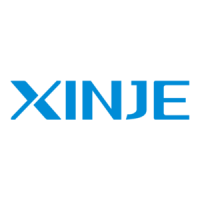307
Number of times to
reach target
temperature
Internal usage
parameters of the
system
PID upper limit of
operational range
Internal usage
parameters of the
system
PID lower limit of
operational range
Internal usage
parameters of the
system
High voltage time when
PID uses Y to output
Internal usage
parameters of the
system
Sampling temperature
after last filtering
The filtered temperature acquired
in the last sampling time (the
input filter constant in the
advanced mode needs to be set
first)
Floating point,
internal usage
parameters of the
system
Last temperature
deviation
Floating point,
internal usage
parameters of the
system
Value of last integral
term
digital value corresponding to Ui
of the last sampling time
Floating point,
internal usage
parameters of the
system
Value of last
differential term
digital value corresponding to Ud
of the last sampling time
Floating point,
internal usage
parameters of the
system
Floating point,
internal usage
parameters of the
system
Note: When the auto-tuning mode is changed to manual control, the value in the original
address of S3+24~S3+40 will be overwritten by the value in manual control mode.
7-3-2 Parameters Description
Movement direction:
Positive movement: the output value MV will increase with the increasing of the measured
value PV, usually used for cooling control.
Negative movement: the output value MV will decrease with the increasing of the measured
value PV, usually used for heating control.
Mode setting
Common Mode:
Parameters register range: S3~S3+69, and S3~S3+7 need to be set by users;
S3+8~S3+69 are occupied by system, users can’t use them.
tudonghoatoancau.com

